With experts across the WILDLABS community working with every type of technology and in every imaginable environment, our platform is a great place to find advice and resources on choosing what tools are right for your conservation project. Whether you're in the market to try a new camera trap model, want to experiment with drones for the first time, or need help weighing the pros and cons of data management tools, there's someone in the WILDLABS community who can help you make a smart and informed choice!
The Community Base is our general gathering group. It's the place where we cover more general, big picture topics in conservation technology - ones that don't fit neatly into our other groups. If you don't know where to post something, just post it in this group. Our moderators will move it if needed!
At our Community Base, you'll find updates from the WILDLABS team on upcoming events and opportunities, and have the chance to shape our programs and platform with your opinions. And most importantly, the Community Base is also home to our Welcome to WILDLABS thread, the best place to introduce yourself to us and the community. Stop by and tell us what you're working on!
Whether you're new to WILDLABS and want to know where to begin, or you're a longtime member looking for a handy bank of resources, our Getting Started on WILDLABS thread will be your one-stop guide to getting the most out of our platform.
Want to find out more about WILDLABS? Check out our recent community call:
Header image: Ana Verahrami/Elephant Listening Project
Group curators
- @TaliaSpeaker
- | She/her
WILDLABS & World Wide Fund for Nature/ World Wildlife Fund (WWF)
I'm the Executive Manager of WILDLABS at WWF

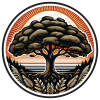

- 23 Resources
- 64 Discussions
- 31 Groups
- @alexrood
- | she/her
WILDLABS & World Wide Fund for Nature/ World Wildlife Fund (WWF)
I'm the WILDLABS Communications and Community Management Associate Specialist at WWF-US

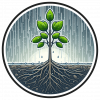



- 149 Resources
- 95 Discussions
- 6 Groups
No showcases have been added to this group yet.
- @kalado
- | Kalado
I am Brazilian and a software developer. I have 20 years of experience in the field and I am currently the CTO of Log Nature, a company specialized in creating solutions for the environmental sector.
- 0 Resources
- 1 Discussions
- 8 Groups
I work in conservation on integrating the technology out there for custom solutions for partners.
- 0 Resources
- 0 Discussions
- 22 Groups
- @adanger24
- | She/Her
Arribada Initiative
Senior Project Manager and Field Specialist
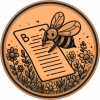

- 2 Resources
- 16 Discussions
- 10 Groups
- @leonardoscarpa
- | He/His
I'm Leonardo, I'm a biologist, and I'm passionate about movement ecology. Another of my hobbies is GIS. I have a master's degree in this topic, which I complement with the use of technology such as drones, camera traps and acoustic receivers
- 0 Resources
- 0 Discussions
- 9 Groups
Passionate about wildlife and impact investment with an academic, research and practitioner background in environmental science, environmental law and green criminology pursued in Central America, China, Tanzania and the United Kingdom I am driven to decolonise the research on c
- 1 Resources
- 0 Discussions
- 9 Groups
- @JunglelaniTales
- | We
We currently producing an animation series meant to teach and inspire climate action to kids. Looking forward to networking opportunities.
- 0 Resources
- 0 Discussions
- 9 Groups
- @Venance
- | Mr
As a wildlife conservationist, I am deeply committed to the Ecology and Community Development. I help communities balance conservation with livelihoods, promoting beekeeping with the motto “Shusha Shoka, Pandisha Mzinga (Drop the Axe, Raise the Hive).
- 0 Resources
- 0 Discussions
- 8 Groups
- @vickymontan
- | She/her
- 0 Resources
- 0 Discussions
- 1 Groups
- 0 Resources
- 0 Discussions
- 4 Groups
- 0 Resources
- 0 Discussions
- 2 Groups
- @Nix
- | she/her
Hello! I'm Amélie, founder of Nix Air Solutions, a company offering wildlife monitoring solutions including biologging IoT trackers and software tools for real time tracking, data cleaning and processing through AI.


- 0 Resources
- 4 Discussions
- 4 Groups
Movement Ecologist studying the where, why, and how animals move throughout our world. Current work is investigating the movement and energetics of large neotropical bats in a changing environment with ephemeral resources.



- 0 Resources
- 23 Discussions
- 22 Groups
Our friends from the Conservation Leadership Programme are now accepting applications for the 2021 Team Awards! These awards for outstanding early career conservationists are a great opportunity to recieve funding for ...
28 July 2020
Article
Everyone agrees that we need to learn more from failure, but … you first. I sat on a ‘failure panel’ once where two speakers weren’t even allowed to mention the organization where they worked, much less use current...
19 February 2020
Let’s be honest, most of us have at some point been involved in a conservation effort that didn’t go as planned or where the activities implemented simply didn’t lead to the outcomes we were expecting. Everyone likes to...
17 February 2020
Funding
The WWF Wildlife Practice is hosting an innovation challenge focused on increasing the long-term benefits of conservation efforts for local people. The Challenge is being hosted on the Impactio platform, a WWF Panda...
19 December 2019
Community Announcement
WILDLABS is the first global, open online community dedicated to conservation technology. The WILDLABS Community Review 2018-19, released today, offers a look back at two years of activity and impact. Download here
30 October 2019
Community Announcement
We're excited to introduce Season Three of the Virtual Meetup Series, bringing leading engineers in the tech sector together with academics and conservation practitioners to share information, identify obstacles, and...
24 September 2019
Conservation Leadership Programme is excited to announce their call for applications for the 2020 Conservation Awards!
30 August 2019
The SCB Conservation Technology Working Group (ConsTech WG) is excited to announce the first call of the ICCB Conservation Tech Awards. These awards support attendance to the forthcoming International Congress for...
12 March 2019
The Society for Conservation Biology is accepting applications for ICCB Travel Grants, which will help offset some of the awardees’ expenses to attend the 29th International Congress for Conservation Biology (ICCB 2019...
11 March 2019
Community Announcement
How are you using tech for wildlife conservation? A picture says a thousand words, so take a photo this World Wildlife Day and share how you're using #Tech4Wildlife!
25 February 2019
Community Announcement
Take the WILDLABS Community Survey 2019! Share your experiences and help us create the definitive dataset of conservation tech community opinion. Closing: 31st March, 2019
13 February 2019
An award-winning team of marine conservationists supported by the Conservation Leadership Programme (CLP) – a partnership comprising Fauna & Flora International (FFI), BirdLife International and the Wildlife...
22 November 2018
October 2025
event
event
event
November 2025
February 2026
April 2026
event
July 2023
event
event
event
May 2023
event
| Description | Activity | Replies | Groups | Updated |
|---|---|---|---|---|
| India’s unique biodiversity faces specific conservation challenges, necessitating the development of innovative, technology-driven... |
|
Community Base, Funding and Finance | 1 year 1 month ago | |
| Thank you Frank for your comments! And no worries, any pointer to info might lead to something relevant, I will google it through ;-) cheersYanna |
|
Community Base | 1 year 1 month ago | |
|
|
Community Base, Early Career, East Africa Community | 1 year 2 months ago | ||
| Hey @antoineede ,I am not sure about that yet video recordings are available or not but you can visit this: SMART Global Congress 2024 | BluePrismMay be here you will get some of... |
+9
|
Protected Area Management Tools, Community Base | 1 year 2 months ago | |
| Fantastic!! |
|
Acoustics, AI for Conservation, Animal Movement, Build Your Own Data Logger Community, Community Base, Early Career, Ethics of Conservation Tech, Marine Conservation, Open Source Solutions | 1 year 2 months ago | |
| Hi @Frank_van_der_Most thanks for flagging that old/broken link. I have updated it to send to this thread here - https://wildlabs.net/discussion/new-platform-help-troubleshooting-... |
|
Community Base | 1 year 2 months ago | |
| We'll be presenting Wednesday morning as part of session 10.1b on "Integrating earth observations and biological tools in ecology and evolution to cogenerate knowledge towards... |
|
Community Base, Animal Movement | 1 year 2 months ago | |
| I noticed the site being annoyingly slow some time last week. Thank you for clearing that up, for finding the cause and solving the issue.I'm not claiming deep knowledge on AI,... |
|
Community Base | 1 year 3 months ago | |
| Hello Ms Esther👋Thank you for taking your time to reply to me with such helpful response.I'm interested in conservation technology such as camera traps, GIS and Remote sensing,... |
|
Early Career, East Africa Community, Community Base | 1 year 3 months ago | |
| Totally agree.Inititally sceptical until I saw Helena and Graeme were involved.MJ |
|
Acoustics, Citizen Science, Community Base, Human-Wildlife Coexistence | 1 year 3 months ago | |
| Hi Kevin and Kim, Apologies for the delayed response; however, we were unable to provide specific information until today. We aim to reach out to each applicant in the... |
+38
|
Community Base | 1 year 5 months ago | |
| Hi Danilo. you seem very passionate about this initiative which is a good start.It is an interesting coincidence that I am starting another project for the coral reefs in the... |
|
Acoustics, AI for Conservation, Animal Movement, Camera Traps, Citizen Science, Climate Change, Community Base, Connectivity, Drones, Emerging Tech, Human-Wildlife Coexistence, Open Source Solutions, Sensors, Software Development, Wildlife Crime, Funding and Finance | 1 year 6 months ago |
The five big announcements from Google I/O
19 May 2017 2:46pm
Info Tech for Non-Profits blog
2 February 2017 6:47pm
3 February 2017 3:48pm
This is a great blog, it's really interesting!
24 May 2017 12:29pm
For those of you who work with large datasets and/or have a high turn over in temp files, the below list of software packages just makes life easier when managing laptop space, cleaning up cached files and zipping/unzipping compressed documents. Enjoy:
- For extended displays etc. Display Fusion. Free for the first month or so for the advanced version and then basic but still free after that. Most importantly allows you to have multiple display profiles so when you remove your laptop from a dock you can switch to a different profile and visa versa.
- For cleaning up a computer with a bunch of rubbish in cache folders etc. (taking up memory and slowing things down) which are difficult to find- CCleader.
- For playing all media and audio types while circumventing the frequent codec problem encountered with windows media player: VLC Media Player.
- For zipping and unzipping a variety of files and a generally superior compression ratio: 7-Zip. This also works for extracting pictures etc. from word documents without opening them- allows you to cut down on word document size without the palaver of opening and scrolling through it.
- Google Earth has now unlocked it’s PRO version with increased functionality for general use (used to cost $400 per year). You can download Google Earth PRO here.
- For programmers or those wishing to view script or large logs in a simple note pad layout but with proper coded colours, indents, file tabs etc. Notepad++.
- Finally for understanding how much space is available and what is taking up the room on any driver: SpaceSniffer.exe. Spacesniffer gives you a graphical representation of whatever driver you point it at (e.g. C Drive) which will allow you to identify possible areas of wasted space and/or bad sectors on external harddrives.
All of the software here was either introduced to me during my time with the Environment Agency or working with the Canadian government so they’ve all been vetted. The only one which is a new download mirror is the CCleaner link but it looks like the software I use on my machine currently. I usually download if from CNET but that comes up with a large number of popups…
24 May 2017 10:56pm
Thanks for the detailed tips, Jonathan. I offered up a similar list of Mac apps on my blog. VLC and Google Earth Pro have Mac versions. For a text editor, I recommed TextWrangler, and for disk space management, Daisy Disk.
Live Webcast May 17: Can Technology Save the Earth?
17 May 2017 10:09am
Biodesign - using pheromones & tech to curate future ecosystems
25 April 2017 9:52am
25 April 2017 1:49pm
Hi. Personally, I like the idea of number 1. It could also be useful for catching invasive species such as lionfish, or maybe it could also act as a lure for them. Could species over time adapt to the presence of the phermones though?
The third point sounds like a GMO and it's one thing when it's being proposed for crops, but it's another when it comes to wild species. That could forever alter the gene pool, similar to the debate over the farming of GMO salmon in proximity to wild populations.
Upcoming capacity building conference
14 March 2017 5:15pm
21 March 2017 7:17pm
I went to one of the ERT Spatial Ecology and conservation conferences in Bristol a couple of years ago. It was invaluable - I discovered things there that I'm now using extensively at work. Plus, Mark is a great guy. I checked back recently and saw that this was happening - it sounds wonderful - have a great time! The WILDLABS.NET session looks awesome!
Using social entrepeneurship for conservation
8 March 2017 1:45pm
Join our #Tech4Wildlife Photo Challenge this World Wildlife Day (March 3)
1 March 2017 3:32pm
5 March 2017 10:38pm
Here is a picture of the black caiman (Melanosuchus niger) taken by a drone, during an expedition throughout the Juruá river, in the Brazilian Amazon.

5 March 2017 10:40pm
For the first time UAV was used for counting river dolphins in the Amazon. Here is the tucuxi (Sotalia fluviatilis) during a expedition in November 2016, in the Amazon.

5 March 2017 10:43pm
WWF-Brasil in partnership with conservationdrones and Mamirauá Institute is leading a project aiming at using drones for supporting studies on river dolphins abundance. It is the first time this approach has been used.

Sign up to participate in Make for the Planet during the Earth Optimism Summit
7 February 2017 3:17am
23 February 2017 8:57pm
Oh! That's great news, thanks for clarifying Barbara.
25 February 2017 12:30am
This sounds fantastic! Am based out of San Diego but could potentially travel in and would be interested to join a WILDLABS team if there's one in the making.
2 March 2017 1:09pm
Managed to chorale a group together at my company and submitted our application last night. If any Wildlabs folk are joining as part of other teams though, I love to meet them there (and will keep my fingers crossed that we're all selected to attend!) :)
It's 2017
6 January 2017 2:58pm
8 January 2017 9:18am
I'm new to wildlabs, and super excited that this forum exists. I'd worked in technology (hardware design) for about 12.5 years, but am now looking for avenues to use that tech experience towards conservation. Personally, I'm just excited to learn about how and where I can use my skills to aid conservation.
2 February 2017 11:23pm
My organization—Wildlife Conservation Network—is trying to use technology to more efficiently connect the stories of our conservation parters with supporters, and increasing our reach. Video is really the theme for many of our projects this year.
We did livestreaming of our Expo last Fall on both Facebook and YouTube, and that worked out well. We'll be doing the same for our 2017 Spring expo this year. Facebook heavily promotes you on your followers’ feeds when you are live. We ended up with over 12k video views so I highly recommend that you all experiment with Facebook Live this year.
I also just picked up an DJI Osmo Mobile camera gimbal. My initial tests are pretty darn impressive, especially when travelling in a vehicle over bumpy terrain. I’ll be using it on-site in Africa in a couple of weeks, and I expect it will take the quality of the typical field video up significantly.
I'm sure the next step will be to invest in a proper lav mic.
And I’m going to be training our partners on the basics of using iMovie to create and upload their own videos to YouTube.
I know this isn't exactly wildlife tech, but I think that pretty much everyone these days has a fantastic opportunity to document the amazing, cutting-edge work you are doing to share it with the world.
Relocating rhinos to Australia?!
5 December 2016 3:25pm
DC Tech Meetup, November 15th
10 November 2016 4:15pm
16 November 2016 12:30pm
It looks like the event went swimmingly @Rachel+Kramer and @jprobert! Did you have a chance to meet any other members or hear about other particularly interesting projects? (photo credit: John Probert)

16 November 2016 7:28pm
It was amazing!!!!
Wildlife Conservation Expo · Oct 8 in San Francisco, CA, USA
10 September 2016 7:58pm
5 November 2016 12:39am
It's a wonderful event and I hope some folks from this community might attend next time. Great opportunity to meet the conservationists.
October Meetup: Tracking technology and acoustic monitoring with BTO
11 October 2016 12:18pm
Digital + core business = biodiversity or ecosystem benefits?
29 August 2016 11:01pm
6 October 2016 5:11pm
Hi Francesca,
I don't think I have the exact answers you are looking for, but 1) maybe where companies have switched from paper/flyer marketing to solely web-based adverts (possibly reducing waste). 2) Check out some of the applications currently being developed around blockchain technology (which underpins the digital currency Bitcoin), specifically in regards to potentially optimising efficiency or energy usage or supply chain transparency (with knock-on effects for improving environmental certification schemes).
Provenance are a start-up currently developing such a model, and may be worth investigating. Here in Edinburgh Uni there is a also blockchain project working with Oxfam on something related to reducing waste/increasing efficiency.
6 October 2016 5:28pm
The blockchain example is a really great point - one that didn't come immediately to mind for me, even though I read about Provenance just a week or two ago. There is a good write up of the project in the link I've included below - it's worth reading, particularly if you're interested in or working on marine conservation and sustainable fisheries.
What to you is considered a species?
27 September 2016 7:00pm
Meetup Topic Ideas - Do you have something to share?
24 May 2016 2:15pm
22 September 2016 9:28am
Hi Stephanie,
A postdoc friend at Newcastle University has been involved in developing and implementing Tumbling Dice's Rana camera trap project for detecting pollinators. Not your average camera trap, Rana detects frames in which a substantial number of pixels in that frame differ from the previous frame and in which these motion-pixels are concentrated into a small area, “the blob”. They used this technology for monitoring pollinator visits to pasqueflower (Pulsatilla vulgaris) in the Chilterns. They are off to Utah to start a new job in 2017 but they could be a great candidate?
It's also well worth checking out Tumbling Dice's other projects including Daisy for automated species recognition at http://www.tumblingdice.co.uk/.
Conservation tech in SE Asia
13 May 2016 9:58am
20 September 2016 7:43am
Hi JC,
I'm looking for similar information for E.Africa (particularly Kenya). Not sure how much these overlap, but have found the following; SMART, Cybertracker, Jigzaw, WILD, MIST, METT, Land PKS. Seems like a big focus on anti-poaching/security. Are you aware/can you please point me to others you may have heard of?
Best Wishes,
Deepali
IUCN Post discussion
19 September 2016 8:27pm
Join other WILDLABS members this evening!
4 September 2016 1:58am
Download our handy guide for the tech sessions at WCC
26 August 2016 4:21pm
27 August 2016 5:03am
Thanks a lot for this!
27 August 2016 1:17pm
Thank you very much @StephODonnell
28 August 2016 10:25pm
My pleasure!
Are you heading to Hawai'i for the IUCN World Conservation Congress?
16 August 2016 3:29pm
27 August 2016 7:07pm
Hello,
I won't be attending the IUCN conference in Hawaii, but I am writing an article on efforts to curtail the illegal wildlife trade through greater regional and international cooperation between the entities tasked with stopping the trade.
The premise of the artlice will focus on the issues raised in this working paper. https://cites.org/sites/default/files/eng/cop/17/WorkingDocs/E-CoP17-28.pdf
I'd like to focus on initiatives underway to clamp down on the transportation and logistics aspects of the global trade. And I'd like to interview the representatives of the conservation groups and agency officials attending for their views on what they'd like to see happen at Cop17.
My deadline is Sept 8th. But I'd like to conduct interviews this coming week.
Thanks,
Enrique Gili
Freelance Writer
email:gili92107@gmail.com
Twitter: gili92107
SkypeID: gili92107
28 August 2016 6:22am
Hi Enrique, a bunch of the Wildlife Crime Tech Challenge solutions focus on transport. See esp. p 13, 19, 21, 29 of the following: https://wildlifecrimetech.org/templates/Prize_Winner_Profiles.pdf
28 August 2016 6:55pm
Brilliant, that's so much for the link. I got wind of the scale of the magnitude of the problem, while researching a story on ports of call for invasive species. http://www.livescience.com/29357-map-shipping-spreads-invasive-species.html
Presenting at the IUCN Congress? Share your event details
16 August 2016 4:30pm
26 August 2016 3:54pm
Hi all
We are running a session on IUCN's decision support tools (mostly databases) for addressing invasive alien species. Many of the tools have come about due to mandates from CBD, and in partnership with other organisations.
Species Conservation Pavilion
4 September 2016
19:30 - 21:30
Details can be seen here - https://portals.iucn.org/congress/session/12436
Many thanks
26 August 2016 7:35pm
On behalf of the United States Department of State, I'd like to invite all interested conservationists, technologists, and others to take part in-person or online in a conservation technology event centered around the upcoming Zoohackathon!
On Friday, September 2 at 1:00 - 1:30 pm in the U.S. Pavilion at the World Conservation Congress, Undersecretary of State Cathy Novelli will host a group of leading wildlife officials, including CITES Secretary General John Scanlon and Association of Zoos and Aquariums Executive Director Kris Vehrs, for a conversation about Zoohackathon and conservation technology generally. We'll show off the recently developed Wildlife Witness app and then answer a few questions solicitied from YOU via WildLabs.net!
Please reply to this thread, write me directly, or follow up with other Zoohackathon threads on WildLabs to ask your conservation tech questions to this group of senior officials. Before the event, we'll pull a few of these questions and ask our panel, film the responses, and provide film and transcript follow-ups on WildLabs.
And if you can join us at the event in Hawaii, we'd love to see you! Then stick around for Jane Goodall's talk immediately following.
Thanks!
DeMark
Zoohackathon Global Coordinator, U.S. Department of State, zoohackathon@state.gov
27 August 2016 1:19pm
Hi @StephODonnell and others,
I'll be joining NOAA, Pew, Walton etc for a workshop on "Application of Monitoring, Control and Surveillance (MCS) Tools for Marine Protected Area (MPA) Enforcement" (session number: 10303; room 307AB; September 2, 2:30-7pm).
My part will be to present on a project that Stimson is launching ahead of the Our Ocean Conference called Secure Our Oceans, focused on technology and innovation for ocean security, including IUU (partnership with National Geographic). Check out www.secureoceans.org
J
Loud noises! We've reached 1000 members!
10 August 2016 4:10pm
Are you working on an inspiring tech project? NT100 nominations now open!
5 August 2016 10:38am
CASTING AMERICA'S GREATEST MAKERS! SPECIFICALLY LOOKING FOR WILD LIFE CONSERVATION TOOLS/INVENTIONS.
24 June 2016 9:14pm
Solar Impulse 2 completes first ever Atlantic crossing by solar plane
23 June 2016 10:00am
May Meetup: Wolf detectors, Multispectral Cameras and Gorilla Radios
24 May 2016 2:13pm
Trophy hunting and #tech4wildlife
3 May 2016 1:30pm
Going into Business for Wildlife Conservation
13 April 2016 12:31pm
Sat 2 Apr: Science Makers: Wildlife and conservation technologies
29 March 2016 2:24pm

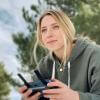





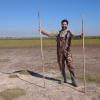
























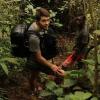



















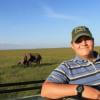



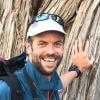
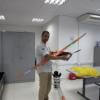

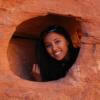



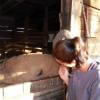



26 May 2017 1:06am
You can get a sense of Google Lens today with the Thing Translator Google AI Experiment. I recommend checking out the other experiments too. Fun and sometimes bordering on magical.